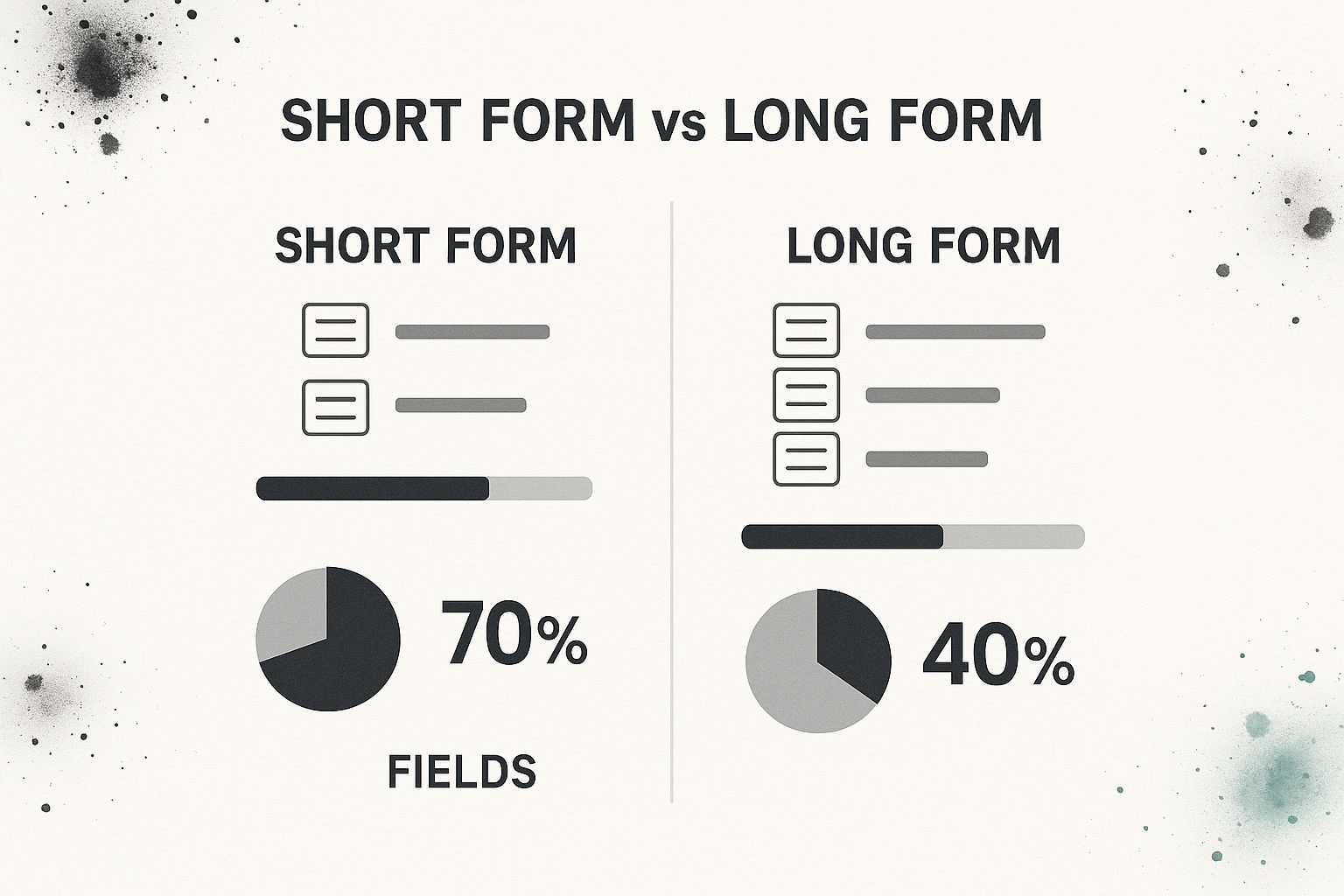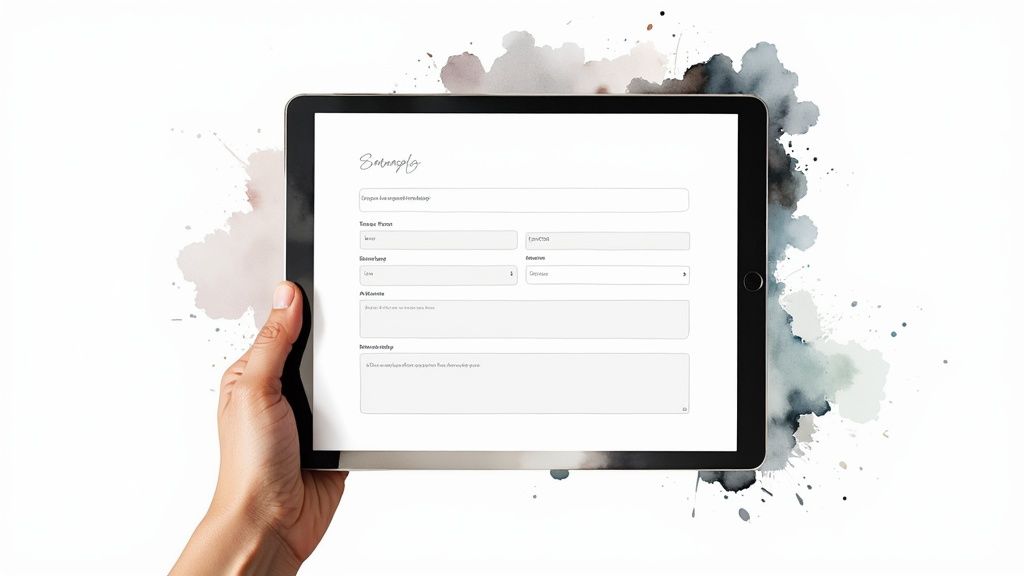Your Polite Customer Testimonial Form Is Why You're Losing
Stop using weak feedback forms. Learn how to build a customer testimonial form that gathers powerful social proof and drives real revenue growth.
Posted by
Related reading
Reputation Management Tools: The Secret Weapon Behind Loyal Customers & Higher Revenue
Reputation management tools help you track customer opinions, detect red flags early, and convert negative feedback into retention wins. See how they work & why feedback-driven SaaS like Backsy outperforms survey-only tools.
How to Collect Anonymous User Feedback (With Ready-to-Use Form Example)
Learn how to collect anonymous user feedback with higher honesty and lower bias. Includes examples, templates, and a ready-to-use feedback form you can embed instantly.
What Is Voice of Customer Service and How to Use It
Learn what Voice of Customer Service is and how to use the raw, unfiltered feedback from support channels to build a product that customers actually want.
A customer testimonial form isn't a suggestion box. It's a weapon. You use it to capture raw, believable stories from happy customers so you can blast that proof in the face of skeptical buyers. Get it right, and it's a sales machine. Get it wrong, and it's just digital paperwork.
Your 'Nice-to-Have' Form Is a Gaping Hole in Your Funnel

Let's be blunt. You think your customer testimonial form is a checkbox on your marketing to-do list. You're dead wrong. That weak, generic "How did we do?" form is actively costing you money. While you're politely asking for "feedback," your competitors are weaponizing real customer stories to steal your lunch.
This isn't about collecting quotes for your team meeting. Ignore your customers, and you’ll be lucky to survive the quarter. A killer testimonial form isn't a data collection tool; it’s a trust factory. It builds the hard social proof that cynical buyers need before they’ll even consider giving you their money.
The Brutal Math You're Ignoring
You're worried about "bothering" your customers. Great. Bother them. The alternative is worse. Your ideal customers are drowning in marketing garbage. They don’t trust your ads, your copy, or your sales reps.
Who do they trust? People who were in their exact shoes six months ago.
The data is screaming at you. Testimonials can boost conversions by up to 270%. A staggering 92% of B2B buyers read reviews before buying. Ignore this, and you’re invisible to nine out of ten prospects.
Your best salesperson isn't on your payroll. They're a happy customer you haven't asked for a story yet. Your job is to find them and give them a microphone.
A powerful customer testimonial form is your microphone factory. It’s not optional; it’s as vital as your CRM. Need a blueprint? Our post on how to create feedback forms is a good place to start without the fluff. Stop treating feedback like a chore and start treating it like fuel.
Takeaway: A strategic testimonial form isn't for collecting compliments; it's a non-negotiable revenue engine.
Stop Asking Useless Questions
Your customers are busy. They don't have time for your 20-question survey about 'overall satisfaction.' If you're getting useless answers like "It was great!", it’s because you're asking useless questions.
Think like a surgeon, not a pollster. Your job is to make precise incisions to get to the heart of their experience. You need to uncover their pain before you, the "aha!" moment with you, and the tangible results after you. A single great question can become the headline for your next ad campaign.
Ditch the Fluff. Hunt for the Story.
First, delete "Would you recommend us?" from your brain. It's a dead-end question that invites a lazy "yes" and gives you nothing. You're not looking for a recommendation; you're looking for a narrative.
The most powerful testimonials aren't endorsements; they are transformation stories. Your form must be a story-extraction machine.
Ask questions that force your customer to recall a specific moment. A well-crafted question makes them the hero, with your product as their secret weapon. If you need to learn this skill, read our guide on how to write open-ended questions that actually work.
And for God's sake, keep it short.

The data doesn't lie. A few extra fields can cut your response rate in half. Every question must earn its place.
Bad Questions vs. Killer Questions
Here's what this looks like in the trenches.
| Generic Crap (Delete This) | Why It's Useless | Killer Question (Use This Instead) |
|---|---|---|
| How satisfied are you with our product? | Vague. Invites a one-word answer. | What was the breaking point that made you finally search for a solution like ours? |
| What's your favorite feature? | Focuses on the what, not the why. | Describe the specific moment you realized this was working. What was the "Aha!" outcome? |
| Would you recommend us to a friend? | A simple "yes" is worthless marketing material. | What's the single biggest, measurable result you've achieved since using us? (e.g., saved 10 hours/week) |
| Is there anything else you'd like to add? | Lazy. The digital equivalent of a shoulder shrug. | What's one surprising benefit you got that you totally didn't expect? |
The difference is night and day. One gets you polite garbage. The other gets you marketing gold.
Takeaway: Ask questions that extract a story, not a score.
Design a Form That Doesn't Feel Like Doing Taxes

If your form looks like a government document, you deserve the zero responses you're going to get. People have the attention span of a gnat. Your form needs to be clean, fast, and feel less like homework and more like a 30-second chat.
This is psychology, not just design. Show one question at a time instead of a giant wall of text fields. Use big, tappable buttons. A progress bar is a classic for a reason—it tells them "you're almost done, don't quit now." These aren't just tweaks; they're the difference between getting a response and getting ignored.
Make It Effortless
The best forms are ruthlessly efficient. They use conditional logic to feel like a smart conversation. If a customer says "improved team efficiency," the next question should be "Awesome. How much time are you saving each week?" It feels personal, not robotic.
Your goal is to make giving you a killer testimonial feel easier than not giving you one.
A clunky form is an insult to the goodwill your happy customer is showing you. It's a basic execution of user experience design best practices. Don't screw it up. Pro tip: save the photo/video upload request for the very end. Asking for it upfront is like asking for marriage on a first date. It's too much, too soon. Get them committed first.
Takeaway: Friction is your enemy. A frictionless design is the only way to get testimonials from busy people.
The Art of the Ask: Timing Is Everything
Asking for a testimonial three months after signup is like high-fiving someone a week after they told a joke. The moment is dead. You look like an idiot. You have to strike when the emotion is high.
Most founders are lazy here. They set up an email drip that asks on day 90. It's predictable, impersonal, and gets deleted. This isn't scheduling a task; it's hunting. The perfect moment to send your customer testimonial form is right after a "win." They just closed a deal with your tool. They just got praised by their boss for results your software delivered. That's your window.
A testimonial is an emotional artifact. Capture the emotion before it fades.
Stop batch-and-blasting your user base. It’s noise. Instead, build the ask directly into their moments of triumph.
Hunt for "Peak Happiness" Triggers
Map out the specific events in your customer's journey that scream "SUCCESS." Don't guess. Be surgical.
Here’s where I’ve found gold:
- Post-Milestone: The second a user exports their first major report or hits a usage threshold that signals they're getting real value. Embed the ask right in the UI. It’s contextual and immediate.
- After a Glowing Support Ticket: Your support team is on the front lines. When a ticket gets a 5-star rating, that's your cue. Trigger an automated (but personal-sounding) email asking for their story.
- When They Upgrade: A customer upgrading their plan just voted with their credit card. This is a prime moment to ask why they decided to commit more.
This isn't pushy; it's smart. By targeting these high-emotion moments, you're not asking for a favor—you're giving them a platform to brag.
Takeaway: Stop asking on a schedule and start asking at the moment of peak customer happiness.
Turn Raw Feedback into a Conversion Machine

Getting the form filled out is half the battle. Letting that feedback rot in a spreadsheet is a fireable offense. The magic happens when you slice and dice that raw customer voice and strategically inject it into your marketing.
Think of each testimonial not as a quote, but as a pile of marketing assets. One response from your customer testimonial form can be turned into a homepage headline, a social media post, and a key talking point for your sales team. Your goal is to deploy these pieces of proof wherever a prospect might hesitate.
A testimonial in a spreadsheet has an ROI of zero. A single sentence from it next to your 'Buy Now' button can be worth six figures.
The playbook is simple. Pull the most potent, benefit-driven lines and slap them on your homepage, pricing page, and checkout flow. Surround the path to purchase with undeniable proof.
Categorize to Conquer
Not all testimonials are equal. Categorize them by the problem they solve, the customer's industry, or the feature they mention.
This lets you get personal. A prospect from e-commerce shouldn't see a quote from a real estate agent. Show them a story from their world.
- By Pain Point: Tag feedback with the problem it solves, like "saves 10 hours/week" or "doubled our lead flow."
- By Industry: Match testimonials to a visitor's industry to build instant relevance.
- By Feature: Place quotes about a specific feature right next to its description.
This isn't just marketing; it's smart business. And once you have these insights, use them with these powerful conversion rate optimization tips.
Takeaway: Stop hoarding testimonials. Deploy them like a special ops team at every point of friction in your funnel.
No-BS Answers to Your Testimonial Form Questions
Let's cut the crap. Here are straight answers to the questions you're probably thinking.
How many questions should my form have?
Fewer than you think. 3-5 killer questions. Max. If you can't get a compelling story in five questions, the problem isn't the number of questions—it's the questions themselves. One broad opener to get them talking, then a few surgical follow-ups to extract hard results. Respect their time, and they'll give you gold.
Should I offer incentives?
Be careful. A $5 gift card gets you exactly what you paid for: a pile of low-effort garbage from people who don't care. You're looking for evangelists, not mercenaries. Instead of cash, offer a spotlight. Feature their company on your website. Give them early access to a new feature. This attracts customers who are actually invested, not freeloaders.
What's the single biggest mistake people make?
Easy. Letting the responses rot in a spreadsheet. Treating collection as the finish line is the dumbest thing you can do. A testimonial that just sits there is worthless. It's like mining for gold and leaving it in the ground.
Your job isn't to collect testimonials; it's to activate them.
Pull quotes for your homepage. Turn data into case studies. Weave stories into sales emails. The form is the starting pistol, not the finish line.
Stop building forms that get ignored and build a testimonial machine that actually prints money with Backsy.